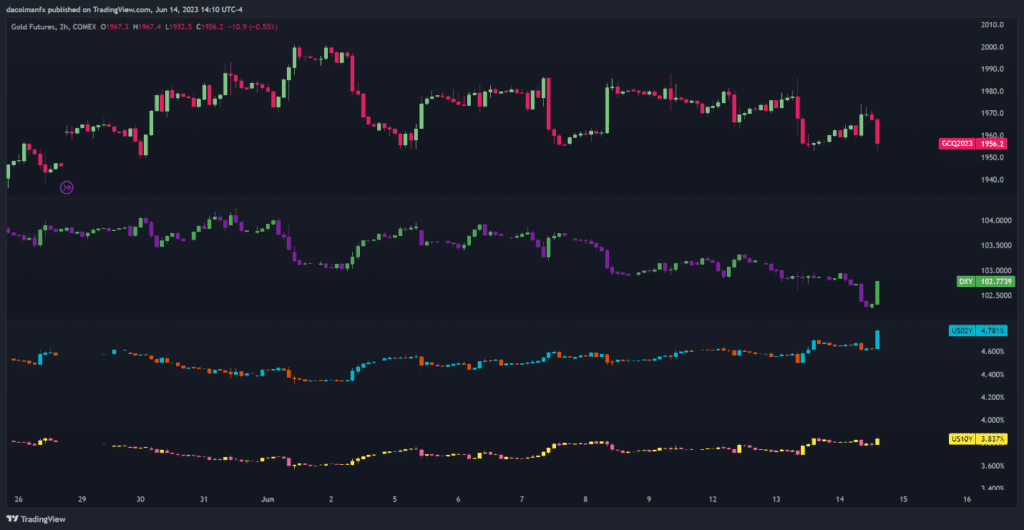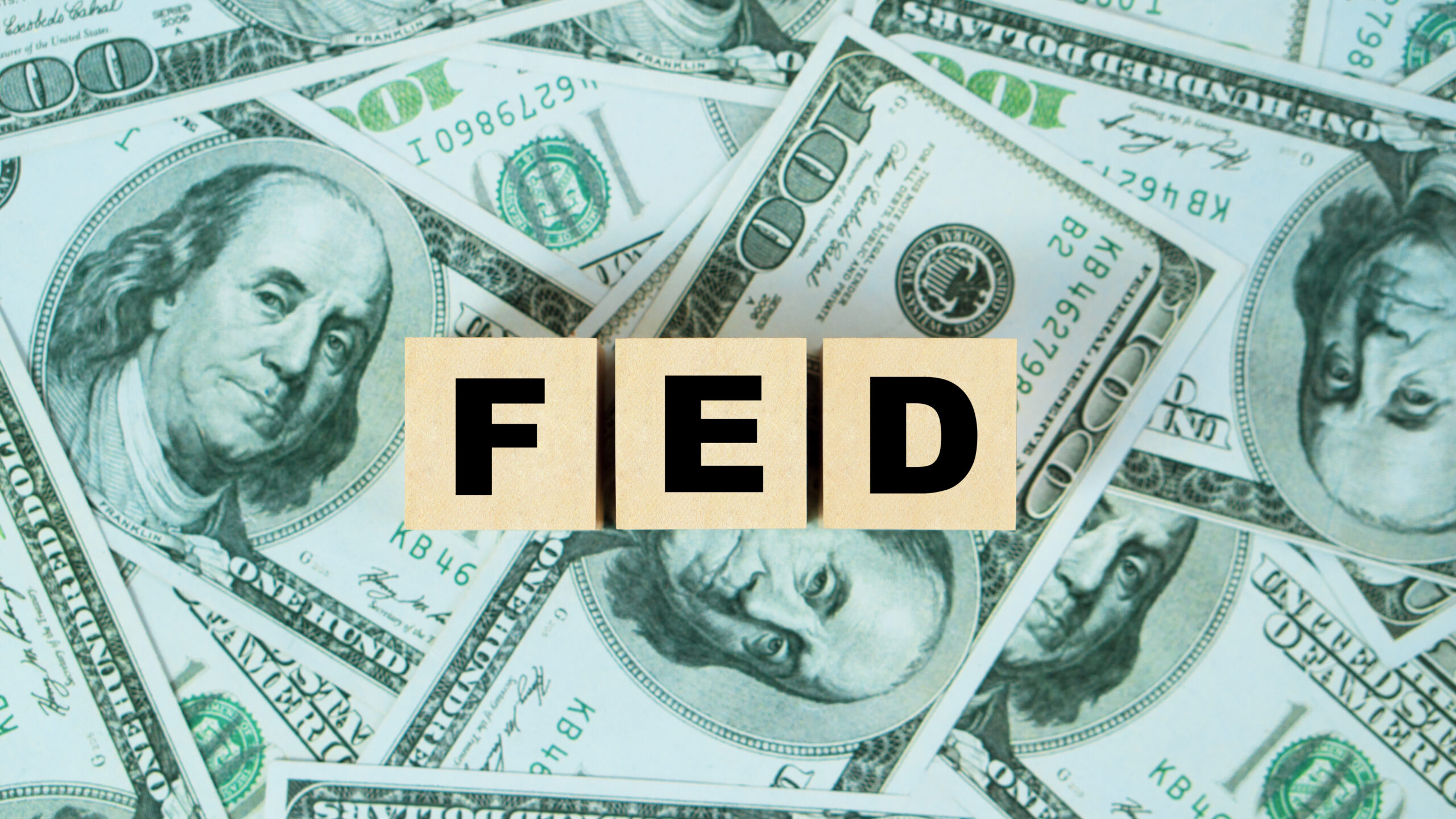The Federal Reserve (Fed) recently announced its decision to keep the benchmark interest rate unchanged, but with a clear indication of a higher peak rate than previously anticipated. This shift in monetary policy has had a significant impact on gold prices, causing them to reverse course.
During its June meeting, the Federal Open Market Committee (FOMC) unanimously agreed to maintain the current range of the benchmark interest rate at 5.00% to 5.25%, aligning with market expectations. However, what caught the attention of market participants was the signal of a higher peak rate compared to projections made earlier this year. This suggests that the Fed’s hiking cycle is not yet over, despite the decision to pause this time.
FOMC Decision Reflects Hawkish Stance, Putting Pressure on Non-Yielding Assets
The FOMC’s decision to hold the benchmark rate comes as the central bank aims to gather more information and assess the evolving economic outlook. Over the past year, the Fed has implemented a series of tightening measures, raising interest rates by 500 basis points since March 2022. This aggressive normalization cycle has played a role in reining in inflation, with the headline Consumer Price Index (CPI) now running at 4.0% year-over-year, down from the previous levels above 8%.

In its policy statement, the FOMC acknowledged the modest pace of economic expansion and robust employment gains. The central bank also reiterated that inflation remains elevated, underscoring the importance of their ongoing efforts to combat rising prices and bring them back in line with their long-term goal of 2.0%.
The dot plot, which outlines the interest rate projections of Fed officials, revealed a more hawkish stance compared to previous estimates. The median interest rate projection for 2023 increased from 5.1% to 5.6%, indicating a potential target range of 5.50% to 5.75%. This suggests the likelihood of two additional 25 basis points rate hikes in the second half of the year. Looking further ahead, the FOMC anticipates a gradual decline in interest rates, with the key rate projected to reach 4.6% in 2024 and 3.4% in 2025.

The market’s immediate reaction to the FOMC decision was felt in the gold market. As the prospect of higher interest rates for a longer period loomed, gold prices reversed their earlier gains and moved into negative territory. The rise in U.S. bond yields and the rebound of the U.S. dollar exerted further pressure on the precious metal. Investors turned to the relatively higher yield of fixed-income investments, diminishing the appeal of non-yielding assets like gold.
The shift in monetary policy also had wider implications for other asset classes. Stocks experienced some volatility as investors recalibrated their expectations based on the Fed’s more hawkish stance. The prospect of higher borrowing costs and tighter financial conditions added a level of uncertainty to equity markets. Additionally, the U.S. dollar strengthened against other major currencies as the anticipated higher interest rates made dollar-denominated assets more attractive.
The FOMC’s decision reflects its determination to tackle inflationary pressures and maintain control over the economy. While the Fed has made progress in reining in inflation, the persistence of elevated prices and the potential for supply chain disruptions continue to pose challenges. The central bank’s commitment to a higher peak rate signals its intention to prevent inflation from spiraling out of control.

Investors and market participants will now eagerly await Federal Reserve Chairman Jerome Powell’s press conference for additional insights into the central bank’s monetary policy outlook. Powell’s remarks may shed light on the Fed’s approach to inflation, future rate hikes, and the potential impact on various asset classes. Clarity from the Fed regarding its strategy will help market participants make informed decisions and navigate the changing landscape.
Click here to check the current Gold Spot Rate
Conclusion
In conclusion, the Fed’s recent decision to maintain the benchmark rate while signaling a higher peak rate has had a notable effect on gold prices and other asset classes. The hawkish stance taken by the FOMC underscores its commitment to addressing inflationary pressures. As the markets brace for potential rate hikes in the coming months, the trajectory of gold prices and other non-yielding assets will depend heavily on the Fed’s future actions and the overall economic landscape. Investors will need to carefully monitor the central bank’s statements and data releases to adapt their investment strategies accordingly.
Click here to rad our latest article about the Australian Dollar steadying



